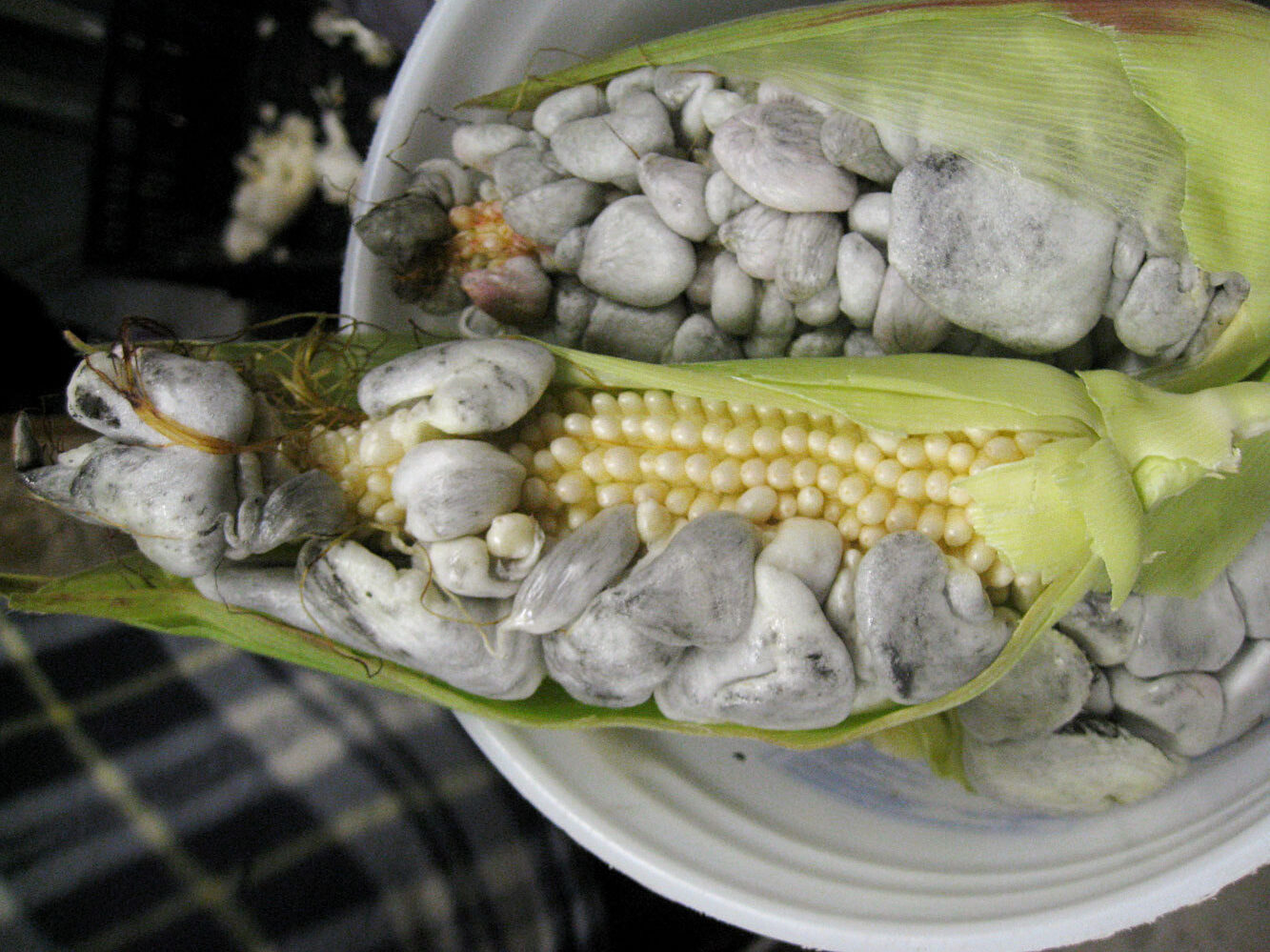Corn smut in the garden can be viewed either as pest or pleasure

MILAN, Ill. — For the most part, we think of fungal infections as undesirable and cause adverse effects on plants.
Fungal pathogens can destroy crops, weaken and deform plant parts or kill the host plant entirely. Fungal pathogens cause billions of dollars of economic loss annually. Within this context, as we cultivate our landscape, it is natural to want to prevent any level of damage, so we scout, treat, implement best management practices and breed resistance into new cultivars.
However, there are fungi that produce desirable outcomes. Saprophytic fungi are involved in the decay process, helping return nutrients to the soil from fallen plant litter and animals. Mycorrhizal fungi have a symbiotic relationship with plant roots that increases root efficiency.
And in a class all of its own is corn smut (Mycosarcoma maydis). Depending on your cuisine preferences, this fungal pathogen of corn may be viewed as a pest or as a pleasure.
Corn Smut
Corn smut is a fungal pathogen that causes abnormal tissue growth on corn plant parts. The galls formed by an infection can appear anywhere on the plant including leaves, stalks, and tassels, but they are commonly found on corn ears. Ears are infected through the silk. Most often, infected plant tissue develops large, greyish-white growths that mature into darkened masses of fungal spores. The galls that form on tassels and ears develop larger gall growth than affected leaves which tend to remain smaller in comparison.
As galls develop, the smooth gray appearance dries out and darkens as the gall ruptures to reveal a black fungal mat from which spores are released. The spores produced in one year will need to overwinter in soil or on plant debris until the following year’s corn crop is growing. Dormant spores are called teliospores and are activated in spring when temperatures range from fifty to ninety-five degrees Fahrenheit.
Once active, wind or splashing water move spores onto plant material where an infection can occur. Factors contributing to corn smut include plant tissue damage occurring while plants are developing. Examples include hail, strong wind events, or mechanical damage. Corn smut spores can remain viable in the soil for multiple years.
Managing corn smut in the garden
If corn smut is undesirable, management options are available. There is no fungicide treatment available for corn smut, but cultural practices can help minimize the potential for and impact of the fungus. Implement multiple management strategies to minimize infection and maximize corn production.
- Remove infected plant material prior to galls fully developing. This reduces the number of spores from spreading and overwintering for reinfection in the following years.
- Choose cultivars that have demonstrated resistance.
- Minimize plant injury and insect damage since wounds are entry points for the fungus.
- Manage soil fertility to promote plant vigor and minimize susceptibility.
Corn smut – a culinary adventure
Corn smut is often viewed as undesirable and damaging to a crop however the abnormal growths are edible and considered a delicacy in Mexican cuisine. Known as “huitlacoche” or “cuitlacoche”, corn smut is used in dishes such as quesadillas, soup and tamales to impart an earthy, mushroom-like flavor.
Harvest galls after they have developed a gray color but before they begin to dry out to enjoy the most flavorful and texturally appealing huitlacoche. Do not consume galls that have developed a powdery interior or have split open to release fungal spores.
Canned huitlacoche can be found for purchase in some Hispanic specialty markets or sections of a grocery store.
Although natural infections can occur, especially in locations where the fungus has been observed prior, corn smut can be cultivated by inoculating corn. To cultivate corn smut on ears of corn, soak corn silks with spores diluted in water. After inoculation, support plant growth with water and fertilizer as needed. In addition to inoculations, choose to grow cultivars known to be susceptible to corn smut such as Silver Queen.
Cooking with corn smut
Prepare corn smut using the following directions for use in crepes, quesadillas, soups, tacos, and more.
- 3 tbsp. safflower oil
- 2 tbsp finely chopped white onion
- 2 small garlic cloves, peeled and finely chopped
- Rajas of 4 poblano chiles
- 1 ½ pound (approximately 6 cups) corn smut
- Sea salt to taste
- 2 tbsp. roughly chopped epazote leaves
Heat the oil in a frying pan. Add the onion and garlic and fry gently until translucent – about three minutes. Add the chile strips and fry for one minute more. Add the cuitlacoche and salt, cover the pan and cook over medium heat, shaking the pan from time to time for about 15 minutes. The fungus should be tender, retaining some moisture, but not soft and mushy. Stir in the epazote and cook, uncovered, for another two minutes.
Good Growing Fact of the Week: When used as a culinary ingredient, corn smut may also be called corn truffle or Mexican truffle.
Bonus Good Growing Fact of the Week: In 2016, the scientific name of corn smut changed from Ustilago maydis to Mycosarcoma maydis to reflect a more nuanced understanding of the smut fungi species. Ustilago maydis remains a synonym for corn smut and can be found in much of the literature on the topic.
Miss Clipping Out Stories to Save for Later?
Click the Purchase Story button below to order a print of this story. We will print it for you on matte photo paper to keep forever.

